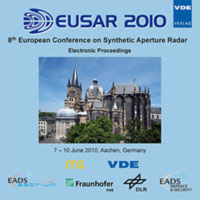A modified version of StaMPS for the detection of localized surface displacement
Conference: EUSAR 2010 - 8th European Conference on Synthetic Aperture Radar
06/07/2010 - 06/10/2010 at Aachen, Germany
Proceedings: EUSAR 2010
Pages: 4Language: englishTyp: PDF
Personal VDE Members are entitled to a 10% discount on this title
Authors:
Schunert, Alexander; Sörgel, Uwe (Institute of Photogrammetry and GeoInformation, Leibniz University Hannover, Germany)
Even, Markus; Schulz, Karsten (Fraunhofer Research Institute for Optronics and Pattern Recognition, Ettlingen, Germany)
Abstract:
In the last decade the Persistent Scatterer (PS) technique became a valuable tool for the estimation of surface deformation from stacks of differential interferograms. In order to extract the deformation with reasonable accuracy, PS methods restrict the analysis to a set of radar resolution cells showing a stable phase behaviour. This is done by estimation and evaluation of the phase noise. However, estimation of the phase noise requires assumptions about the spatio-temporal behaviour of all other phase contributions, underlying the noise term. While general principles apply for most phase contributions like those due to orbit errors and atmosphere the deformation phase often demands specific modelling. Within the Stanford Method for Persistent Scatterers (StaMPS) the deformation phase is assumed to be correlated in space and in time. This constraint leads to an underestimation of the quality of a resolution cell undergoing localized deformation, as this deformation is interpreted as phase noise. We propose an extension to StaMPS coping with localized deformation by only presuming correlation in time. The method is applied to a TerraSAR-X data stack acquired over a test site in Germany. In order to be capable to compare the results with ground truth, height-adjustable corner reflectors were placed within the imaged scene. Every corner reflector is adjusted in accordance with a predefined pattern. The obtained results are in good agreement with this reference data.


